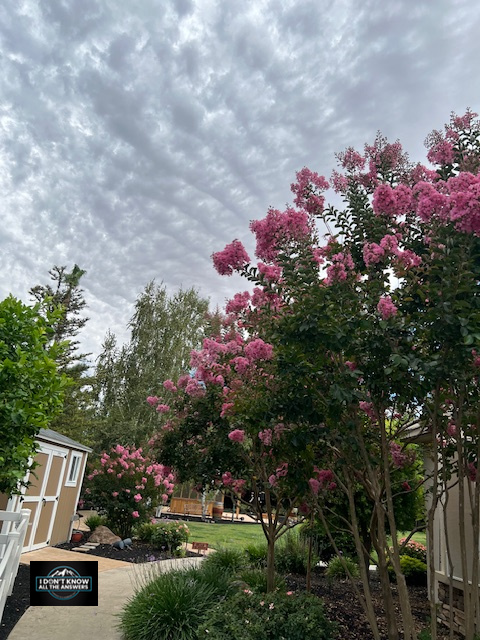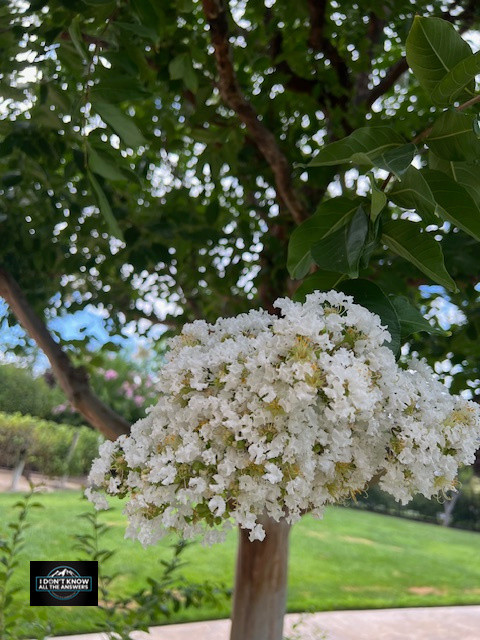Crepe Myrtle Trees, scientifically known as Lagerstroemia indica and Lagerstroemia fauriei, are a gardener’s dream. These beautiful trees originated in Asia and have made their mark across gardens and landscapes worldwide. I want to walk you through their unique characteristics, varieties, and care tips.


One of the most striking features of Crepe Myrtle Trees is their vibrant flowers, which come in shades of pink, red, white, and purple. These blossoms can light up any garden, creating a spectacular display during the summer months. Another fascinating aspect is their bark, which peels away in strips to reveal a smooth, multi-colored surface underneath. This unique feature adds visual interest even in winter when the trees are not blooming.
Varieties and Growth Patterns
Crepe Myrtle Trees come in various shapes and sizes, from dwarf varieties that grow just a few feet tall to towering specimens that can reach up to 30 feet. Some popular varieties include:
- Natchez (Lagerstroemia fauriei): Known for its white flowers and fast growth.
- Tuscarora (Lagerstroemia indica): This variety boasts vibrant coral-pink flowers.
- Muskogee (Lagerstroemia fauriei): Its lavender blooms are a favorite in many gardens.
The Best Conditions for Crepe Myrtle Trees
Planting and Care
Planting Crepe Myrtle Trees is a rewarding endeavor if you follow a few simple guidelines:
- Ideal Soil Conditions: Crepe Myrtle Trees prefer moderately fertile, well-drained soil. Adding compost or organic matter can improve soil quality.
- Watering Needs: While drought-tolerant once established, young trees need regular watering to help them settle.
- Pruning: Prune in late winter to shape the tree and remove dead or weak branches. Avoid “topping” the tree, which can harm its natural form.
- Winter Care: In colder climates, mulch around the base to protect roots from freezing temperatures.


Environmental and Cultural Significance
Crepe Myrtle Trees offer more than just beauty. They provide significant environmental benefits:
- Shade: Their broad canopy offers much-needed shade in hot climates.
- Pollinators: The flowers attract bees, butterflies, and other pollinators, supporting your local ecosystem.
- Air Quality: Like all trees, Crepe Myrtle Trees contribute to cleaner air by absorbing carbon dioxide and releasing oxygen.
Culturally, Crepe Myrtle Trees hold a special place in many regions. In the southern United States, for example, they are a staple in gardens and public spaces, symbolizing beauty and resilience. In Asia, their native land, they are often featured in traditional gardens and celebrations.
Pest and Disease Management
While relatively hardy, Crepe Myrtle Trees can be susceptible to certain pests and diseases:
- Aphids: These can be controlled with insecticidal soap or neem oil.
- Powdery Mildew: Good air circulation around the tree can help prevent this common fungal disease.
- Japanese Beetles: Hand-picking these pests or using traps can minimize damage.
Uses in Landscaping and Urban Environments
Crepe Myrtle Trees are incredibly versatile and can be used in various landscaping scenarios:
- Garden Focal Points: Their striking flowers make them perfect centerpieces in garden designs.
- Urban Green Spaces: They are frequently planted in city parks and along streets to provide shade and beautify urban areas.
- Public Gardens: Many botanical gardens feature Crepe Myrtle Trees, showcasing their beauty and variety.
Personal Stories and Experiences
I’ve always had a soft spot for Crepe Myrtle Trees. Since Jim and I married, we have had Crepe Myrtle trees in every garden. Every summer, the trees burst into clouds of flowers, and we enjoy the spectacle. The Crepe Myrtle trees were not just a part of our garden but a part of our family. Fellow enthusiasts have shared similar stories of how these trees have become part of their family traditions and memories. These personal experiences with Crepe Myrtle Trees testify to their beauty and the joy they bring to our lives.
Future Prospects and Research
Looking ahead, the future of Crepe Myrtle Trees is bright. Ongoing research is focused on developing more disease-resistant varieties and promoting their use in sustainable landscaping. The potential of these trees in carbon sequestration makes them an even more valuable asset in combating climate change. With these promising developments, the role of Crepe Myrtle Trees in our outdoor spaces is set to grow, bringing us closer to a greener, more sustainable future.
Conclusion
Crepe Myrtle Trees are not just a feast for the eyes; they offer environmental benefits, cultural significance, and personal joy. Whether you’re a seasoned gardener or a newcomer, incorporating Crepe Myrtle Trees into your landscape can enhance your outdoor space in countless ways. The joy and satisfaction of watching these trees grow and bloom are unparalleled. I encourage you to explore these remarkable trees and consider planting one in your garden. Trust me, they’re worth it!
References:
How To Grow & Care For the Stevia Plant – PlantPropagation.org. https://plantpropagation.org/how-to-grow-care-for-the-stevia-plant/
Pink Flowering Dogwood Tree — Gardens of the World. https://www.gardensoftheworld.com/products/pink-flowering-dogwood
Boost Your Property Value with the Power of Trees – Sheridan Nurseries. https://sheridannurseries.com/blog/boost-your-property-value-with-the-power-of-trees
Thank you for reading this blog post. If you have any questions or comments, please leave them in the Comments section below.
Copyright © 2019. I Don’t Know All The Answers, Nikki Mastro.
All of my photographs and documents are Copyrighted.
No part of this website, including text, photographs, and documents, may be reproduced, stored in a retrieval system, or transmitted in any form or by any means without written permission from the copyright holder. All unauthorized use is strictly prohibited. If you choose to copy or share any information from my site, you must provide a link to the source. I appreciate your cooperation.
For further information concerning “I Don’t Know All The Answers.”
– Website and Blog: https://www.idontknowalltheanswers.com
– Facebook: https://www.facebook.com/Nikki.L.Mastro/
– Instagram: https://www.instagram.com/i_dont_know_all_the_answers/
– Linkedin: https://www.linkedin.com/in/nikki-mastro-05455a3a/
– Youtube Channel: https://www.youtube.com/@idontknowalltheanswers1954
